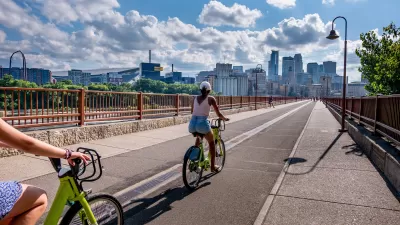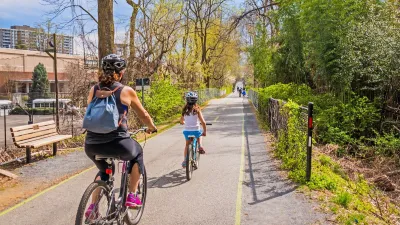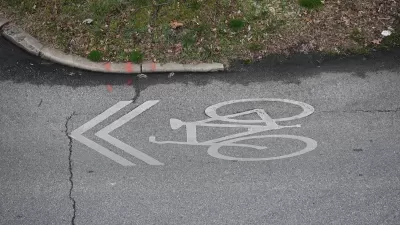Research reveals that, once a city reaches a certain threshold of bike infrastructure, opposition decreases and residents want more.

Has your city entered the ‘virtuous cycle’ of bikeability? Writing in Streetsblog USA, Kea Wilson describes the ‘tipping point’ at which residents begin calling for more bike infrastructure, signaling a desire to see biking as an everyday transportation mode.
The measure comes from advocacy group PeopleForBikes, which issues an annual list of City Ratings. Cities that score 50 or above on the organization’s SPRINT rubric, which “includes such measures as protected bike lanes, safe intersection treatments, and reduced speed limits that are unlikely to kill a cyclist in the event of a crash, among other factors,” are said to have reached the tipping point where “bike culture has firmly taken root.”
According to Martina Haggerty, senior director of local innovation at PeopleForBikes, “[That's] not to say that there aren't still improvements to be made [but it] probably means that more people are riding bikes in those communities because they feel safe and comfortable. And when more people start riding bikes, those people tend to become advocates for better bike infrastructure and for pro-bike policies, which, [in turn,] will get more people riding.”
This year, 183 communities achieved a score of 50 or higher, a dramatic jump from the 33 that reached that score in 2019. This “reveals for the first time just how fast these destinations have improved their biking scores over the years — and how, at a certain point, those wins become self-perpetuating.” However, those communities represent just 8 percent of the 2.300 communities on the list.
FULL STORY: Has Your City Passed the ‘Bikeability Tipping Point’?

Alabama: Trump Terminates Settlements for Black Communities Harmed By Raw Sewage
Trump deemed the landmark civil rights agreement “illegal DEI and environmental justice policy.”

Planetizen Federal Action Tracker
A weekly monitor of how Trump’s orders and actions are impacting planners and planning in America.

The 120 Year Old Tiny Home Villages That Sheltered San Francisco’s Earthquake Refugees
More than a century ago, San Francisco mobilized to house thousands of residents displaced by the 1906 earthquake. Could their strategy offer a model for the present?

In Both Crashes and Crime, Public Transportation is Far Safer than Driving
Contrary to popular assumptions, public transportation has far lower crash and crime rates than automobile travel. For safer communities, improve and encourage transit travel.

Report: Zoning Reforms Should Complement Nashville’s Ambitious Transit Plan
Without reform, restrictive zoning codes will limit the impact of the city’s planned transit expansion and could exclude some of the residents who depend on transit the most.

Judge Orders Release of Frozen IRA, IIJA Funding
The decision is a victory for environmental groups who charged that freezing funds for critical infrastructure and disaster response programs caused “real and irreparable harm” to communities.
Urban Design for Planners 1: Software Tools
This six-course series explores essential urban design concepts using open source software and equips planners with the tools they need to participate fully in the urban design process.
Planning for Universal Design
Learn the tools for implementing Universal Design in planning regulations.
Clanton & Associates, Inc.
Jessamine County Fiscal Court
Institute for Housing and Urban Development Studies (IHS)
City of Grandview
Harvard GSD Executive Education
Toledo-Lucas County Plan Commissions
Salt Lake City
NYU Wagner Graduate School of Public Service





























